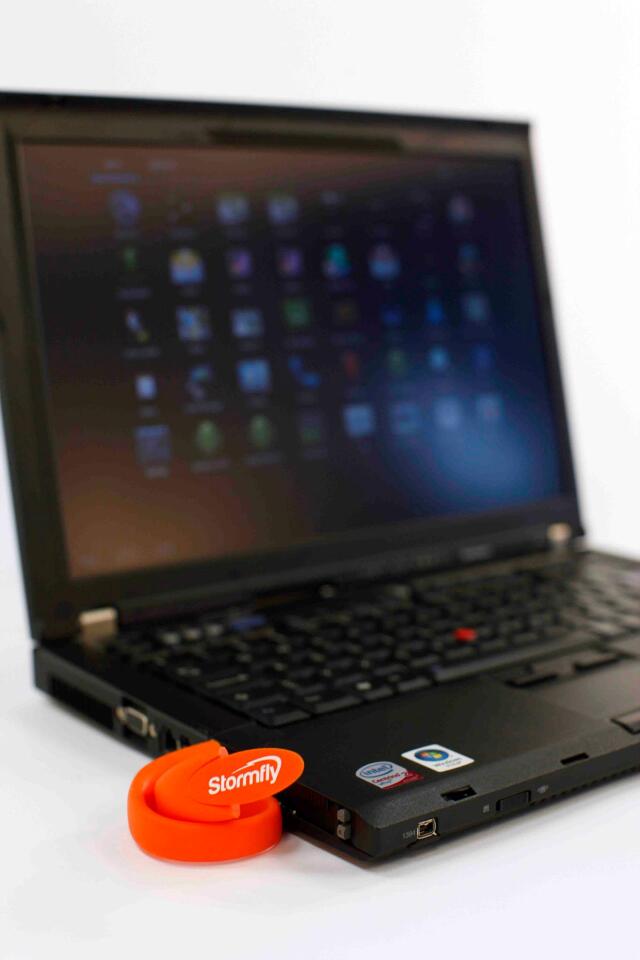As I know only too well from personal experience, factors such as damaging or space-hogging downloads, personalized desktops, tweaked settings or all manner of accumulated digital detritus can have serious effects on the performance of shared computers. Super Talent offered some welcome relief to PC users in 2010 with its Express RAM Cache thumb drives, allowing users to carry their own virtual desktop, personal files and favorite programs from computer to computer. Now Computing out of Barcelona, Spain, has taken the next logical step by throwing a full operating system on a wrist-worn flash drive. StormFly bypasses the resident PC or Mac operating system completely, so it doesn't leave a trace of user activity, and includes enough space for personal files and user settings.
StormFly has been designed as an alternative to cloud-based computing which, according to Now Computing, can be cumbersome, slow, sometimes ugly, and not always available. At its heart sits an open source operating system that's bootable on most modern (64-bit) PCs and Macs with the help of proprietary smart-boot technology. The 16 GB wristband-based pre-production prototype also boasts fast read/write speeds thanks to the inclusion of USB 3.0, benefits from 128-bit encryption (a password is required during the boot process for added security), and makes use of a host machine's system memory.

A StormFly user starts by plugging the wristband into the USB port of the host machine and rebooting or booting from cold. The boot process is then interrupted (instructions are provided) and the hardware redirected to run from StormFly. Then you're ready to play, work, download and enjoy your time at the computer using your own personalized settings (wall paper, mouse cursors, icons and so on) without impacting on the host.
Half of the available storage space is taken up by whatever Linux OS is running on the device, together with system files (including device driver management) and installed programs. There's 4 GB for user settings and personal information and the rest is allocated for a shared folder.
Everything except the shared folder is password protected, and this folder is visible outside of StormFly's system – meaning that users can drop a video into the folder while using a Windows PC, for example, and view it later on a Macbook booted into the StormFly system.
Unlike a LiveCD Linux effort that you might be able to create on your own USB flash drive, StormFly is claimed to have full app and file persistence (meaning that apps and files are retained at every reboot), and if you don't want or need an OS on your wrist, it can be used like any other thumb drive.

Although StormFly doesn't require access to the internet to work, one of the biggest selling points for security-conscious folks like myself is the ability to go online using a host computer and not leave any traces of your activity on the machine itself.
Now Computing is also introducing a rather refreshing take on the back-up of data. Users can opt to pay an annual subscription of US$19.99 to have the device back itself up to the company's encrypted servers whenever it gets online. Should a StormFly wristband get lost or stolen, a new one can be ordered from Now Computing (for $49) and the company will create a replacement using the last saved backup. This will then be sent out by courier. Sweet.
Sadly, StormFly is not yet available to buy. Now Computing has launched on Kickstarter to help provide the financial push needed to finalize the product and bring it to market. A pledge of $59 will secure an orange- or black-colored StormFly (three months backup service included). The Evangelist level for $199 includes lifetime backup and one replacement StormFly. If successful, backers could get to wear and use StormFly as early as April.
Sources: Now Computing, Kickstarter
















